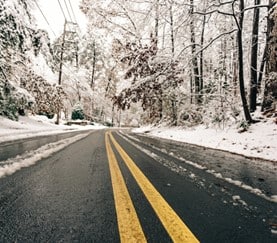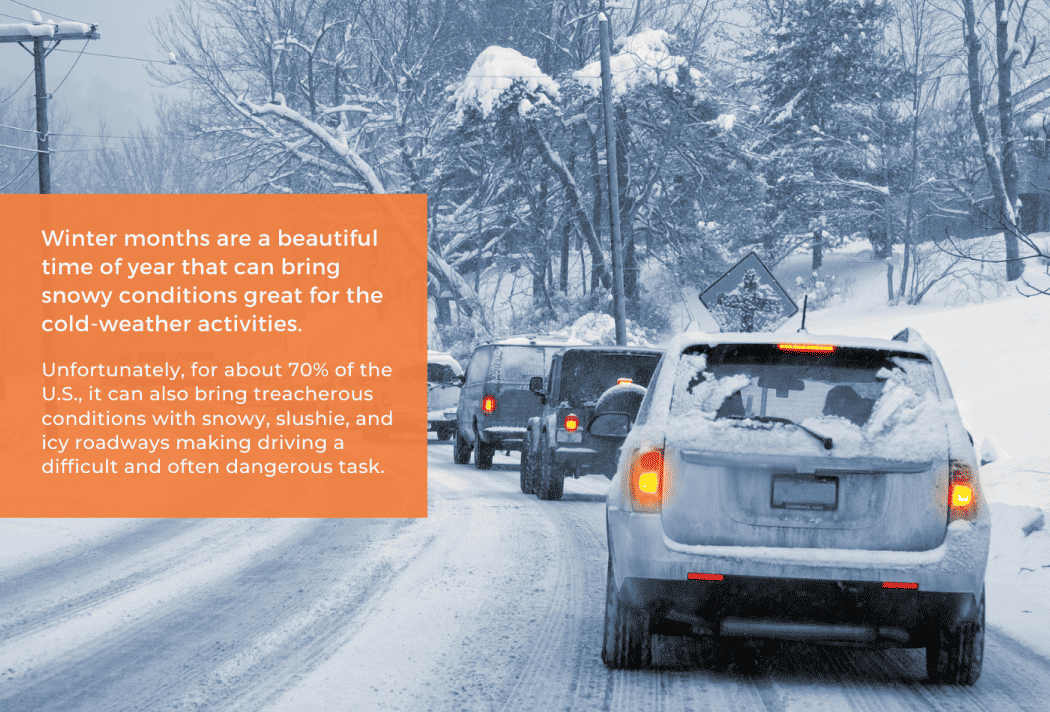By Chris Sullivan, Director of Risk Management
Every year, more than 1,300 people are killed and over 116,000 people are injured in vehicle accidents on snowy and/or icy roads, according to the Federal Highway Administration. During the current 2022/2023 winter season there have been reports of multi-car pile-up crashes in several states:
Four inches of snow from winter storm Elliot caused multiple crashes in Colorado.
Washington State Troopers responded to over 200 crashes in just 3 counties during the same storm. In Ohio a 46-car pileup resulted in four fatalities due to whiteout conditions.
Many of us have seen the recent videos of cars simply sliding on ice – vehicles no longer under control of the drivers – contributing to these accidents and more. Help avoid the next major news story featuring a multi-vehicle pileup and keep your employees safe by implementing the following safe driving policies and practices.
WINTER DRIVING SAFETY TIPS
PLANNING AHEAD
- Check current weather conditions, future forecasts, and possible construction areas along your route beforehand.
- Allow extra time for traffic delays and slower travel.
- Dress accordingly — wear warm clothing and appropriate shoes.
- Don’t forget your cell phone and charger. Make sure phone is fully charged before traveling.
- Inform another party before leaving. Let them know your route, destination, and estimated time of arrival.
- Get familiar with the laws in the states where you are traveling. Consider carrying a list of state specific safety requirements for quick reference.
PREPARING YOUR VEHICLE
- Check current weather conditions, future forecasts, and possible construction areas along your route beforehand.
- Allow extra time for traffic delays and slower travel.
- Dress accordingly — wear warm clothing and appropriate shoes.
- Don’t forget your cell phone and charger. Make sure phone is fully charged before traveling.
- Inform another party before leaving. Let them know your route, destination, and estimated time of arrival.
- Get familiar with the laws in the states where you are traveling. Consider carrying a list of state specific safety requirements for quick reference.
DRIVING IN WINTER WEATHER CONDITIONS
- Turn ON headlights so you can see and be seen. Turn OFF cruise control.
- NEVER drive faster than conditions allow.
- Drive at reduced speeds, accelerate and decelerate slowly, and make all movements gently. Increase following distance behind the vehicle in front of you.
- Decreased visibility = increase following distance
- Take extra caution when traveling on ramps, bridges, and overpasses. They are often the most dangerous in the winter since they freeze before roadways
- Slow down ahead of turns and curves and steer steadily. Do not change directions abruptly and refrain from braking suddenly.
- When changing lanes, move over in a long, gradual line with minimal steering changes.
- Be aware of possible skidding hazards such as ice patches, piles of wet leaves and shady areas. Watch for melting or hard-packed snow and strong side winds as well.
- Avoid overpowering in deep snow. Use a light foot on the accelerator (rather than slamming on the gas to move forward).
- If possible, do not stop going uphill.
- Anticipate stops by slowing down gradually, well ahead of intersections. Brake gently to avoid skidding.
- Learn how to steer your vehicle out of a skid.
- Be aware if vehicle has antilock brakes – if the brakes lock, release them to avoid sliding. Drivers should ensure weight has been evenly distributed within the vehicle.
- Stay alert! Keeping a window slightly open to provide fresh air. Watch for wild animals crossing your path.
- Know the vehicles capabilities and how it will perform for the given weather conditions.
- Use common sense and best judgement. If you feel uncomfortable or unsafe driving in the given conditions, do not drive. It’s better to be safe than sorry.
IMPORTANT REMINDERS
If you get stuck in the snow and you cannot move your vehicle – stay with your vehicle! Unless rescue personnel are clearly visible, never move far from the vehicle in heavy snow to avoid becoming disoriented and unable to return to the vehicle.
NEVER leave a vehicle running in an enclosed space, like a residential garage, it can cause carbon monoxide poisoning.
Planning, preparation, the correct vehicle maintenance, and safe driving precautious are the keys to staying as safe as possible while driving in winter weather conditions.




